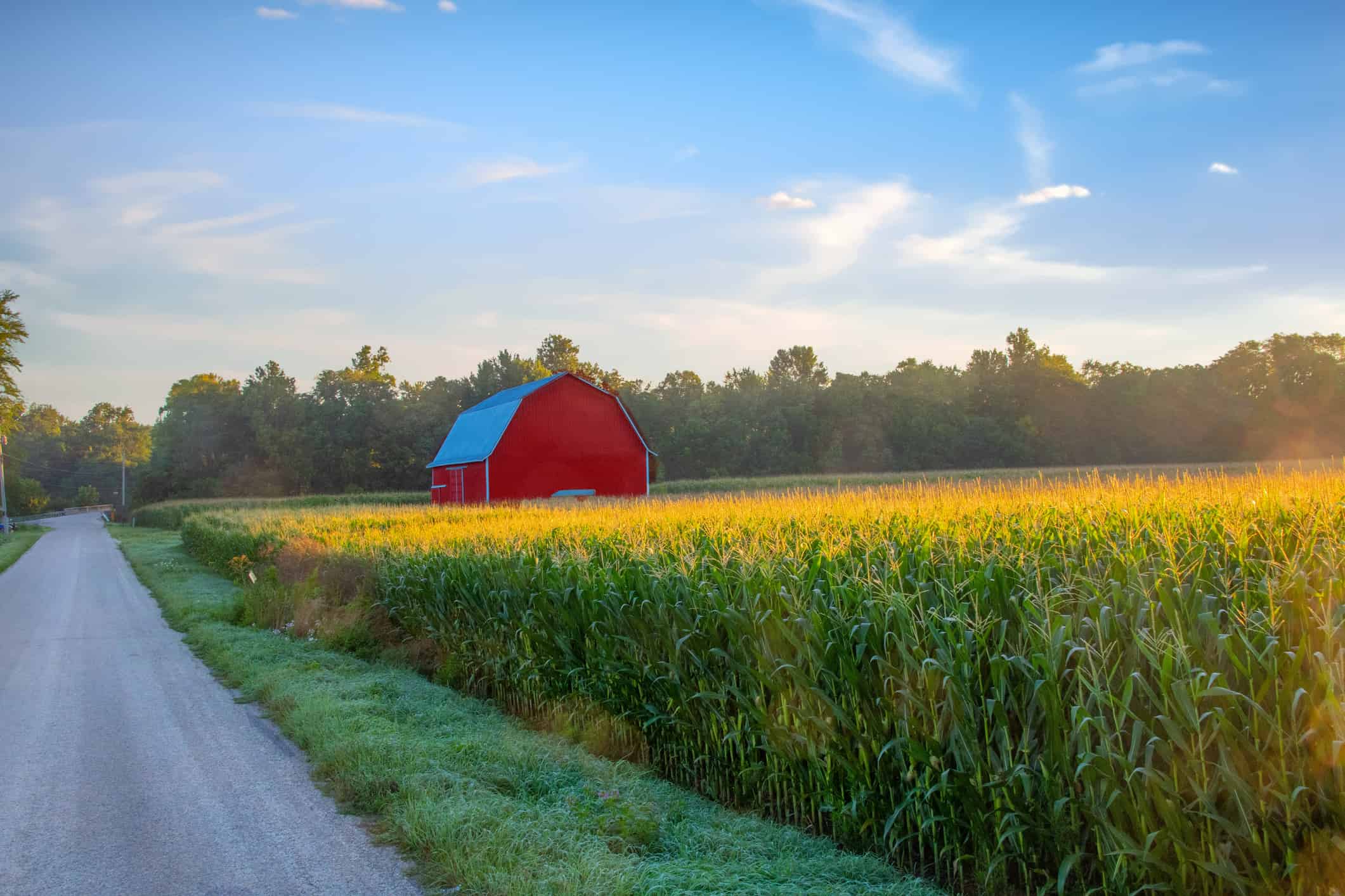How Indiana got its name contains a story twist in which the name disappeared for a short time before being permanently resurrected. So how did Indiana get its name? And what is its origin and meaning? The following story gives us a glimpse into Indiana’s origins, its historic and political path to statehood, and how it finally got, and kept, the name that means “land of the Indians”.
The Origin and Meaning of How Indiana Got Its Name
Back in 1768, the Six Nations of the Iroquois Confederacy made a boundary treaty with the English to settle an old debt. That boundary treaty included 5,000 miles lying south of the Ohio River and east of the Great Kanawha. The land was accepted as a complete payment of the debt and was now in need of a name. Following previous Old World examples of naming states and countries, the new owners decided to call it the land of the Indians, or Indiana. Naming land after the people from whom it was received was common, with similar examples being Georgia, Virginia, Louisiana, and Carolina.
Eight years later, in 1776, an event takes place that seemingly does away with the original Indiana name. The land known as Indiana was offered for sale and purchased by a new company titled “Indian Land Company”. However, this land was originally laid out in the debt settlement to fall within the existing boundaries of Virginia. Virginia then moved to claim Indiana as her own by right of the original charter. Many years of disputes and controversy followed, including a suit in front of the Supreme Court in 1792. In 1800, Congress divided the Northwest Territory. This created the State of Ohio for the Eastern division and resurrected the Indiana name for the Western division. Ever since that ruling, Indiana has retained the name originally bestowed on her since her origins.
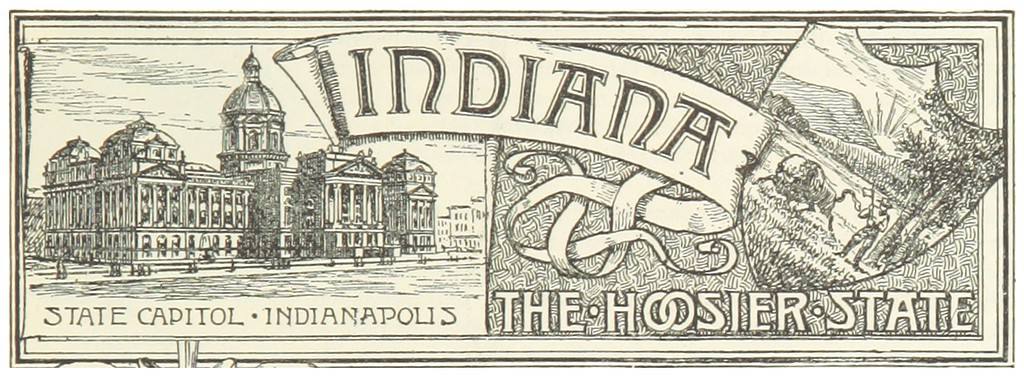
Indiana’s origins started with it being part of a debt settlement instead of cash payment.
Interesting Indiana Facts
- Indiana became our 19th state on December 11, 1816.
- The Indiana state flag was designed by Paul Hadley of Mooresville. He was the winner of Indiana’s centennial celebration flag design contest in 1917.
- The capital of Indiana is Indianapolis.
- Indiana consists of 36,417 square miles.
- The estimated 2023 population of Indiana is 6.84 million, making it the 17th most populous state.
- Indiana’s official nickname is The Hoosier State, adopted on January 8, 1833.
- The State’s motto is “The Crossroads of America”.
- The Indiana state tree is the Tulip tree.
- The state flower is the peony, adopted in 1957. This ruling replaced the state’s original flower choice of zinnia that was in place from 1931 to 1957.
- The state bird is the cardinal, also called the redbird.

Indiana’s state motto remains Crossroads of America.
©Peterfitzgerald / This picture is not protected by copyright. The original creator released it into the public domain and has released all rights. This applies worldwide. – Original / License
Discover the Origin and Meaning of “Indiana Hoosier”
Indiana is known as the “Hoosier State”, with its residents referred to as “Hoosiers”. While there are many suggested origins for the nickname, one theory generally stands out as being the most logical. Backed by the Indiana Historical Bureau and the Indiana Historical Society, the theory suggests that the term “Hoosier” originated from the uplands south region of the US as a common way to describe a backwoodsman, a rough-appearing countryman, or a simple country bumpkin. That uplands south region included Virginia, the Carolinas, and Tennessee.

The origins of Indiana residents being labeled as “Hoosiers” date back to the slogan’s adoption in 1833.
©SevenMaps/Shutterstock.com
Discover The Meaning Behind Indiana’s State Flag
The Indiana state flag features yellow symbols against a blue background. There is a torch in the middle signifying liberty and enlightenment, with rays reaching out from the torch to illustrate their far-reaching influence. Nineteen stars adorn the flag. Thirteen stars create an outer circle to represent the original colonies. Six stars form a semi-circle at the end of the six rays to represent the states admitted before Indiana. One larger start directly above the middle torch represents Indiana.
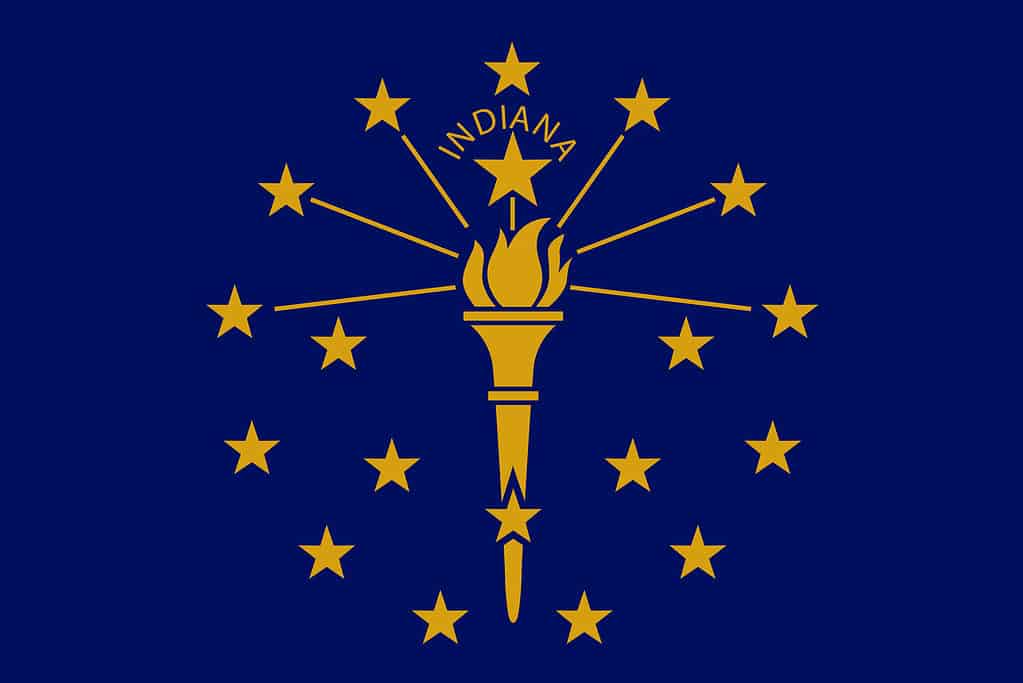
Indiana’s flag is a blue field with a torch surrounded by 19 stars – 13 in an outer circle, an inner semi-circle of five stars, and a large star above the torch, with “Indiana” written right above it.
©iStock.com/Maksym Kapliuk
Discover The Symbolism In Indiana’s State Seal
The 1963 General Assembly approved Indiana’s state seal, based on designs used from the origin of Indiana as a territory. The state seal features a setting sun disappearing behind three hills. On the right of the seal, there are two sycamore trees, one with a notch cut from a nearby woodsman with his ax. The foreground shows a left-facing buffalo jumping over a log. The scenes pay tribute to Indiana’s pioneer origins from when it was a territory up through its statehood.
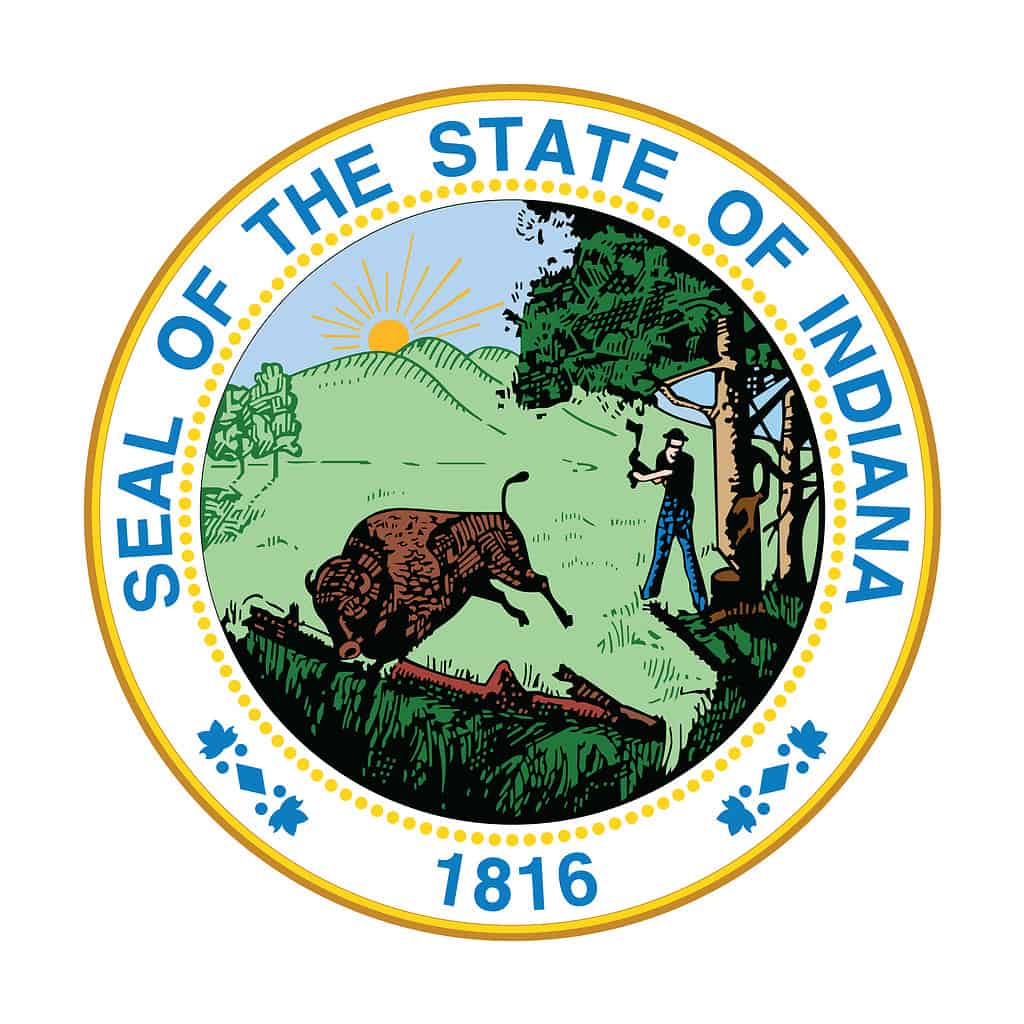
The Indiana State Seal gets its origins from Indiana’s early pioneering days, first as a territory and then under statehood.
©iStock.com/bodrumsurf
Additional Indiana Trivia
On May 30, 1911, the Indianapolis Motor Speedway hosted its first Indianapolis 500-mile race. With a capacity of roughly 400,000 including the infield seating, the Indianapolis Motor Speedway is the highest-capacity sports venue in the world.
Indiana is home to America’s first train robbery. On October 6, 1866, the Reno Brothers gang robbed an Ohio and Mississippi train in Jackson County. They got away with $13,000.
A highly-touted, escape-proof county jail in Crown Point, Indiana, was no match for legendary bank robber John Dillinger. He broke out of the jail on March 3, 1934, using a fake, wood-carved pistol to work his way around guards. The subsequent federal manhunt led to Dillinger’s death at the hands of FBI agents the following July.
Every year, Santa Claus, Indiana receives hundreds of thousands of letters and Christmas lists from hopeful youngsters. To this day, every letter gets a personal response.
In August 1987, Indianapolis hosted the Pan American Games, featuring over 4000 athletes from 38 nations.
The “Limestone Capital of the World” is in Bedford, Indiana. This preferred Indiana limestone is evident in many state capitols, the Pentagon, the National Cathedral in Washington D.C., and the Empire State Building.
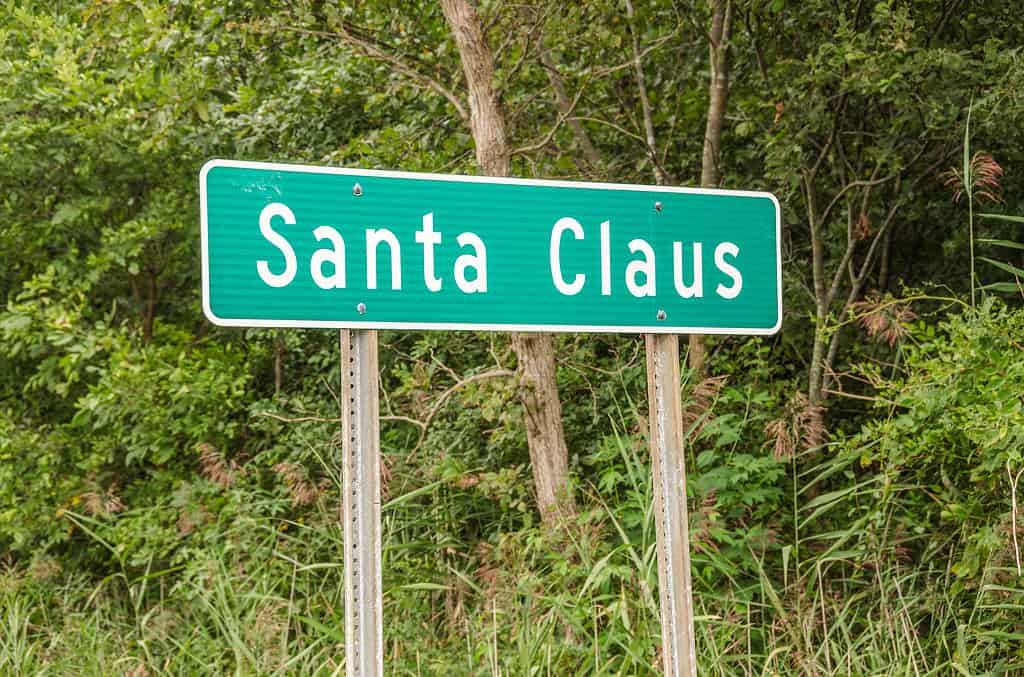
Santa Claus, Indiana receives hundreds of thousands of pieces of mail for Santa every year.
©suesmith2/ via Getty Images
Thank you for reading! Have some feedback for us? Contact the AZ Animals editorial team.

